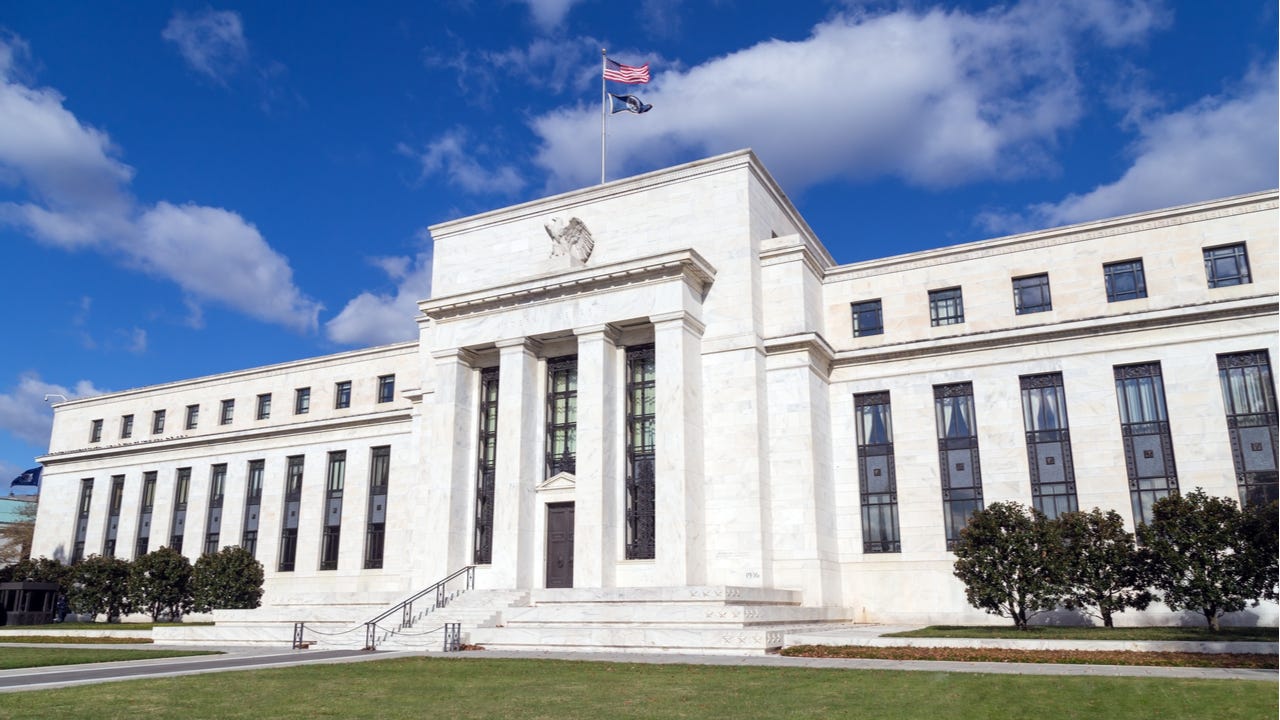How does the Fed interest rate affect car loans?

The Bankrate promise
At Bankrate we strive to help you make smarter financial decisions. While we adhere to strict , this post may contain references to products from our partners. Here's an explanation for .
Key takeaways
- Decisions made by the Federal Reserve to increase the benchmark rate do not directly impact auto loans but rather the cost for banks to lend.
- The higher the Fed sets rates, the higher the auto loan rates you receive will likely be.
- According to a Bankrate survey, most economists believe that in 2024, the Fed will begin cutting interest rates.
The Federal Reserve is a complex facet of the American economic system. The Fed determines how much it costs to borrow money at its eight or so meetings per year. One of its jobs is setting a benchmark interest rate for short-term consumer lending, which private lenders use to set their own rates. If the Fed raises the federal funds target rate — as they last did at the July 2023 meeting — you can expect to pay more for a personal or auto loan.
How Fed rates affect auto loans
Auto loan rates are dictated by the time of year, the type of vehicle, the borrower’s credit score and more. But the Fed sets the benchmark rate on which auto loan lenders base their rates.
The choices discussed by the Federal Open Market Committee (FOMC) during Fed meetings are not the exact interest rates consumers will be offered; rather, they impact the cost for banks to lend to each other. Because of this, banks and lenders may change the rates they offer to consumers when the federal funds rate changes. When the Fed raises interest rates, auto loan rates may rise as well, or vice versa.
June Fed meeting
In response to the economic disruptions caused by the pandemic, the central bank controls inflation through rate hikes. During the June Fed meeting, the FOMC opted against lowering the target range for the federal funds rate. It remained at 5.25-5.5 percent — the highest it’s been in 23 years.
This number does not control auto rates directly. Rather, it is tied to the prime rate. The 11 rate increases since the beginning of 2022 mean that vehicle financing could cost you more money.
Sarah Foster, senior U.S. economy reporter at Bankrate, notes that now it is just an expensive time to purchase a vehicle — with or without rate hikes.
“Americans in the market for a car haven’t had it easy,” Foster explains. Vehicle prices have only cooled modestly, averaging $47,899 in September, according to Kelley Blue Book. But high prices are only part of the story.
“The massive run-up in prices is a textbook example of inflation, and so is what happened because of it: Rising interest rates,” says Foster.
Drivers are feeling the brunt of high costs for new and used, with rates averaging at 6.63 percent and 11.38 percent, respectively, according to Experian. Consider how high rates combined with more expensive vehicles have created a challenging landscape for buyers.
Fortunately, Foster and most officials agree that the end of steep rate hikes is in sight. According to a Bankrate survey, 94 percent of economists think the Fed may begin cutting rates — rather than increasing them — beginning in 2024.
Why Fed meetings are important
Fed meetings are important because they allow anyone to have a transparent look into the economy — more specifically, the way interest rates change and are expected to shift. If the Fed announces that it is raising interest rates, you can expect to encounter more expensive loans or see interest rates rise on any variable-rate loans you already have.
- Check out Bankrate’s Federal reserve hub to see how the FOMC could impact you and your money.
How to prepare for future Fed rate changes
Preparation is the key to saving money. To be best prepared, educate yourself on the current federal funds rate and how shifting rates may impact your wallet. The federal funds rate and auto loan rates aren’t the same, but a domino effect reaches the lenders, which then affects your rates.
Although the current federal funds rate dictates the general range of auto loan rates available, your credit score is the primary factor in determining the amount you pay. To receive a loan with the most favorable terms, you must have a prime credit score, typically 660 and above, and good credit history. The federal funds rate is out of your control, but you can improve your credit score to prepare for future vehicle financing.
Next steps
When the Fed adjusts rates, available auto loan rates may also change. Although the Fed’s decisions impact your auto loan, the rate you will receive is primarily determined by your financial history.
Regardless of how the federal funds rate changes, set yourself up for the best auto loan rate by working to improve your credit score and finances. It’s also good to keep up to date on current loan rates before applying for a new auto loan.
Related Articles



